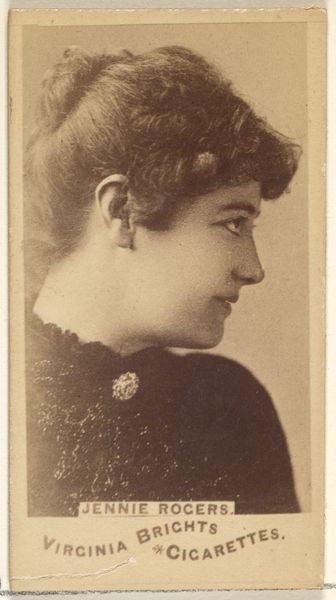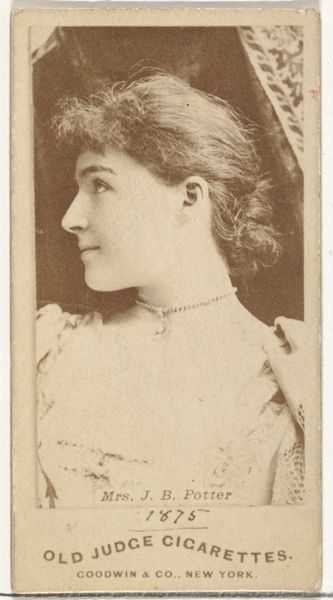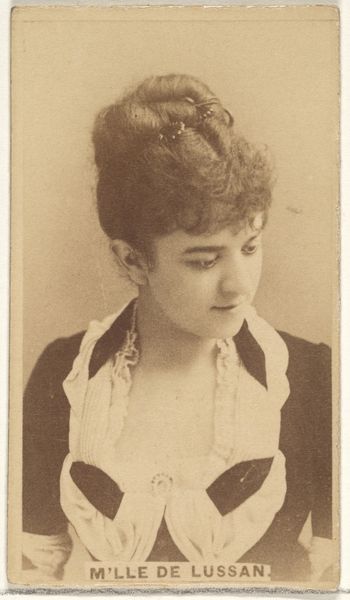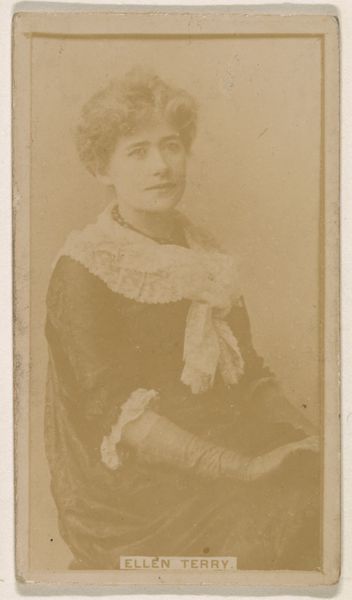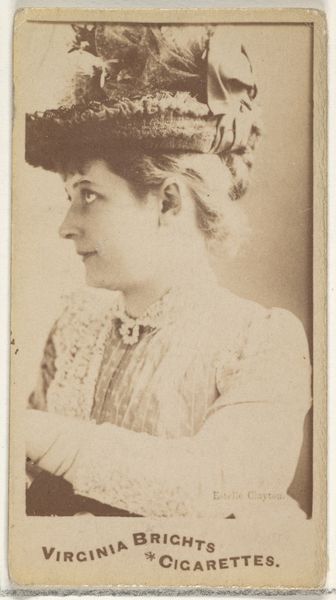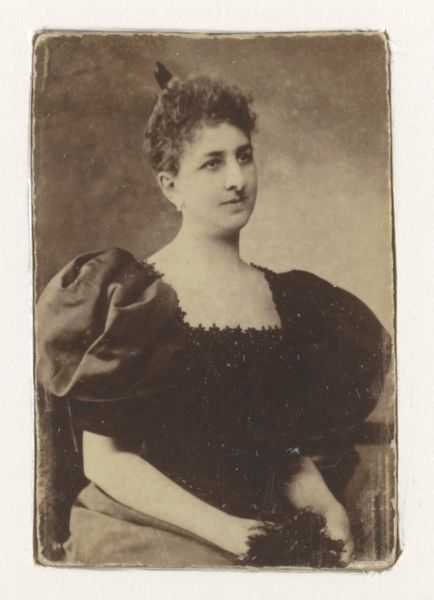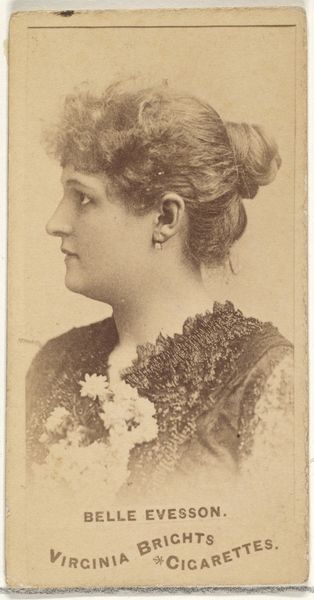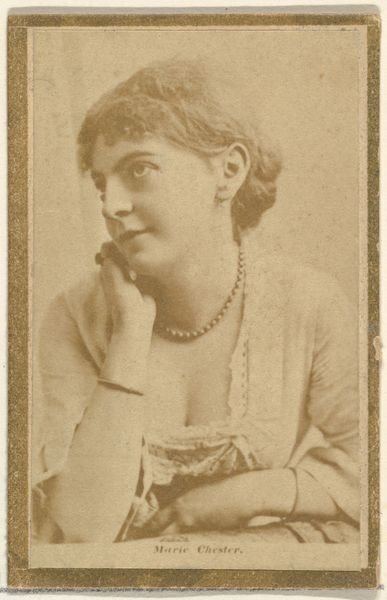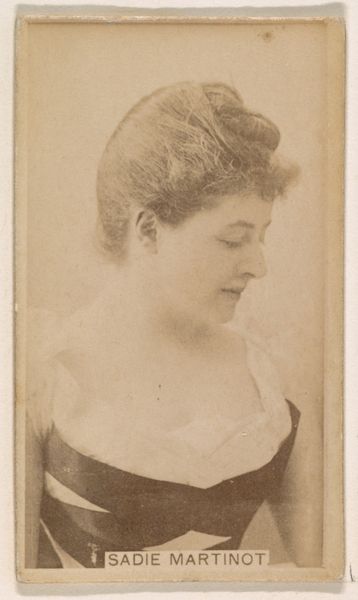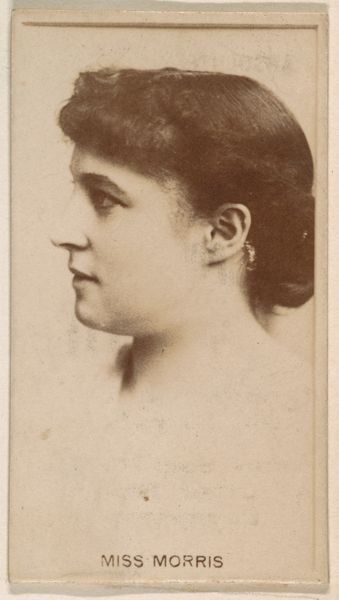
Zelia de Lussan, from the Actors and Actresses series (N171) for Gypsy Queen Cigarettes 1886 - 1890
0:00
0:00
drawing, print, photography
#
portrait
#
drawing
# print
#
impressionism
#
photography
#
19th century
#
men
Dimensions: sheet: 2 11/16 x 1 3/8 in. (6.9 x 3.5 cm)
Copyright: Public Domain
Curator: Let's discuss this curious object, a photography from the Actors and Actresses series (N171) created for Gypsy Queen Cigarettes between 1886 and 1890 by Goodwin & Company. It's a portrait of Zelia de Lussan, housed here at the Met. Editor: It has this soft sepia tint. Something about it evokes the mood of the late 19th century...the elegance, the somewhat posed stillness. Curator: It is an interesting conflation of things isn't it? An object made for mass consumption, but attempting to distill beauty. Tell me, what comes to mind when you consider the symbols associated with performance, with acting as a profession in this era? Editor: Immediately, I think about the limitations placed on women in the arts, the double standard of actresses needing to embody virtue on stage while often facing scrutiny for their personal lives. Were they selling de Lussan's talent or her image in this moment? Curator: A layered question. There's an obvious emphasis on surface, right? We're meant to admire the arrangement of her hair, the lace at her collar. The “Gypsy Queen” label is compelling too; it gestures towards the exotic, a free spirit tamed for capitalist interests. Editor: Exactly. It plays into the broader phenomenon of exoticizing women performers, particularly those who challenge social norms. But de Lussan also presents herself as quite refined here; not challenging any standards in that era. I do see a deliberate visual code operating through a calculated marketing tactic. The power dynamics at play feel incredibly complex. Curator: And what of the implicit symbolism associated with tobacco, then? Considering that Goodwin & Co., and tobacco products are not frequently regarded now in art conversation. What assumptions or even projections might we bring to this type of imagery? Editor: The associations of status, pleasure, and maybe even transgression… a subtle rebellion marketed to a certain kind of consumer. Linking cigarettes to beauty and fame is a manipulative trope. De Lussan unwittingly became a prop for this agenda, her image now speaking of a time of growing capitalist structures in the west, including in places like New York. Curator: A fascinating nexus of art, commerce, and social messaging contained within a small cardboard rectangle. The dialogue helps uncover its broader cultural significance, which makes images and icons valuable objects, always up for interpretation, centuries later. Editor: Absolutely. Looking at it, now, it's really just a tiny snapshot loaded with echoes of identity, consumerism, and hidden gendered expectations, of their era. I don't think it gives much, but it offers a mirror for us to look at ourselves, to learn what, if anything, we have really moved on from.
Comments
No comments
Be the first to comment and join the conversation on the ultimate creative platform.
